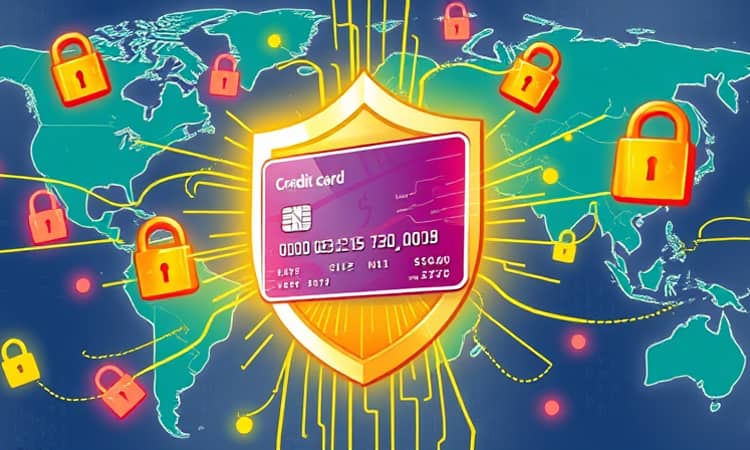Credit Card Fraud Protection: Tips to Stay Safe

Credit card fraud is a growing threat that can undermine your financial confidence and sense of security. As digital transactions become the norm, criminals are deploying ever more sophisticated techniques to exploit vulnerabilities.
Empowering yourself with knowledge and practical habits is the first step toward regaining peace of mind over finances.
Understanding Credit Card Fraud
Credit card fraud encompasses any unauthorized use of card data to make purchases or withdraw funds. Globally, losses are predicted to climb from $32.4 billion in 2021 to $43 billion by 2026.
In the United States alone, credit card fraud attempts are rising by 46 percent year-over-year, with ecommerce incidents surging by 140% in the past three years.
By understanding how thieves operate, you can adopt targeted defenses and stay one step ahead.
Common Types of Credit Card Fraud
Fraudsters exploit both physical and digital channels. The most prevalent schemes include:
- Skimming and counterfeit cards: Information stolen at POS devices, often mitigated by EMV chips.
- Identity theft: Opening accounts in someone else’s name using stolen personal data.
- Account takeover (ATO) fraud: Hijacking existing cardholder accounts via credential breaches.
- Card-not-present (CNP) fraud: Online or phone transactions using stolen card details without the physical card.
Each method carries unique warning signs. Small, test charges often precede major theft.
Key Statistics at a Glance
Prevention Strategies for Consumers
Individual cardholders can take concrete steps to reduce their exposure:
- Monitor accounts regularly: Inspect statements every month and note unfamiliar charges.
- Enable transaction alerts: Real-time SMS or email notifications for each purchase.
- Use two-factor authentication: Add an extra layer of login security on card portals.
- Practice safe handling of cards: Keep cards in sight and prefer chip over swipe.
- Adopt unique passwords: Never reuse credentials across multiple sites.
- Update software often: Keep browsers, apps, and antivirus tools current.
Separating cards by purpose—such as designating one for subscriptions—limits collateral damage if one is compromised.
Prevention Strategies for Businesses
Merchants and service providers must also strengthen defenses to protect customers and their own bottom line:
- Secure payment processing: Employ encryption, tokenization, and EMV-compliant terminals.
- Implement AVS and CVV checks: Verify billing addresses and card security codes for CNP transactions.
- Leverage fraud detection tools: Use machine learning algorithms and behavioral analysis.
- Train employees effectively: Educate staff to spot tampering and suspicious activity.
Layered security measures not only reduce losses but also build customer trust and loyalty.
What to Do If You Suspect Fraud
Swift action can limit financial damage and prevent identity theft:
- Contact your credit card issuer immediately to report unauthorized activity.
- Place a fraud alert or credit freeze: Prevent new accounts from being opened in your name.
- Dispute charges formally and follow up until resolution.
- Review your credit reports for other signs of suspicious accounts.
Staying calm and following your bank’s policies ensures the fastest recovery.
Building Long-Term Resilience
Beyond immediate defenses, cultivating habits of vigilance and continuous learning is crucial. Credit card issuers now offer multi-layered security infrastructures and real-time AI fraud detection to safeguard transactions.
Remaining informed about emerging scam techniques and regularly refreshing your security knowledge fosters lasting protection. Developing a mindset of proactive defense empowers you to retain control over your financial future.
Final Thoughts
The battle against credit card fraud is ongoing, but individuals and businesses armed with the right tools and awareness can significantly reduce risk.
By integrating practical security measures into daily routines and staying alert to evolving tactics, you can protect your assets and enjoy greater peace of mind.
Your financial well-being is worth the effort—start implementing these strategies today and secure a safer tomorrow.
References
- https://www.infosysbpm.com/blogs/fraud-retail/credit-card-fraud-prevention.html
- https://www.occ.gov/topics/consumers-and-communities/consumer-protection/fraud-resources/credit-card-and-debit-card-fraud.html
- https://www.equifax.com/personal/education/credit-cards/articles/-/learn/how-to-help-prevent-credit-card-fraud/
- https://usa.visa.com/support/consumer/security.html
- https://stripe.com/en-gi/resources/more/credit-card-fraud-detection-and-prevention
- https://merchantcostconsulting.com/lower-credit-card-processing-fees/credit-card-fraud-statistics/
- https://www.nerdwallet.com/article/credit-cards/ensure-online-credit-card-purchases-safe
- https://datadome.co/learning-center/types-of-credit-card-fraud/






